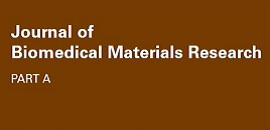Digital technology and 3D printing have significantly elevated the rate of success and transformed the workflow and practice of dental implant standards of care. Click here to read the results of the study on implants produced by laser sintering.
Read In-Vitro researchThese results indicate that additively manufactured 3D porous constructs mimicking human trabecular bone and produced with additional surface treatment can be customized for increased osteoblast response. Increased factors for osteoblast maturation and differentiation on high porosity constructs suggest the enhanced performance of these surfaces for increasing osseointegration in vivo.
Read the complete researchThe objective of this study was to examine the influence of a trabecular inspired porosity manufactured by laser sintering on cell response and bone ingrowth. The effect of a 3D trabecular porosity was also observed in vivo, where porous implants were able to support vertical bone growth even without the addition of exogenous factors. Laser sintering was used to produce constructs for in vitro and implants for in vivo studies. Ti–6Al–4V implants fabricated by additive manufacturing to have porosity based on trabecular bone and post-build processing to have micro/nano surface roughness can support vertical bone growth in vivo, and suggests that these implants may be used clinically to increase osseointegration in challenging patient cases.
Read the complete Research
Biofabrication 6 (2014)
Alice Cheng, Aiza Humayun, David J Cohen, Barbara D Boyan and Zvi Schwartz
Download
2016 Wiley Periodicals Inc.
Sharon L. Hyzy, Alice Cheng, David J. Cohen, Gustavo Yatzkaier, Alexander J. Whitehead, Ryan M. Clohessy, Rolando A. Gittens, Barbara D. Boyan, Zvi Schwartz
Download
Department of Biomedical Engineering, Georgia Institute of Technology and Emory University, Atlanta, GA, USA Alice Cheng, David J. Cohen, Adrian Kahn, Ryan M. Clohessy, Kaan Sahingur, Joseph B. Newton, Sharon L. Hyzy, Barbara D. Boyan, Zvi Schwartz
DownloadSounds interesting? Contact us and we will get back to you.